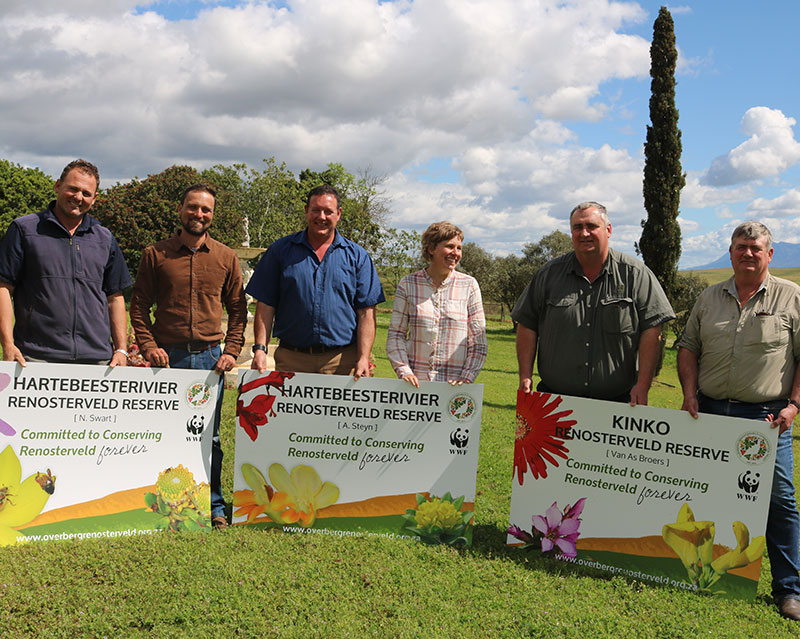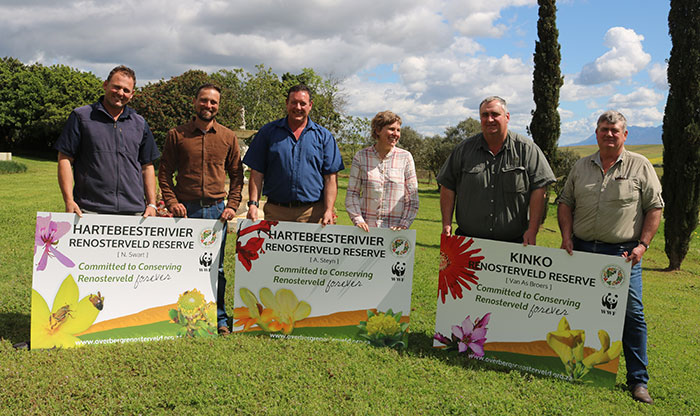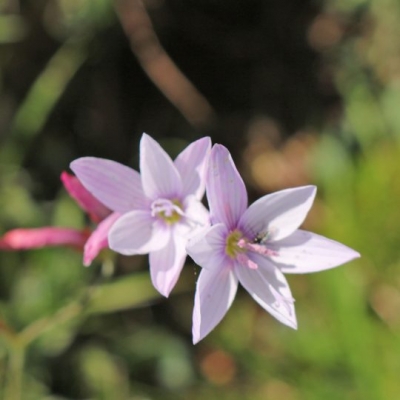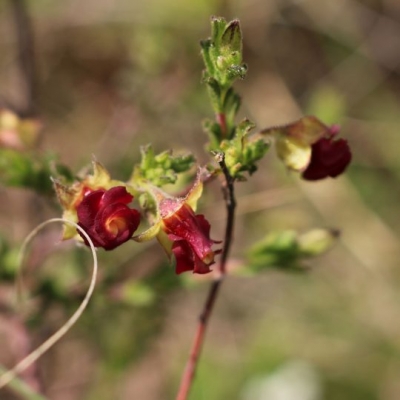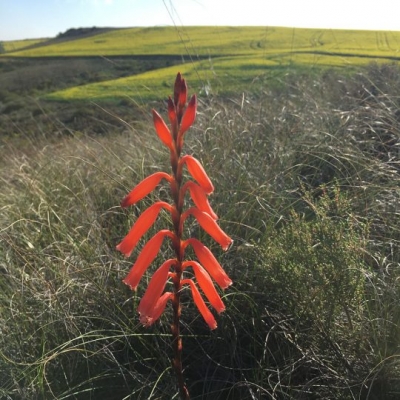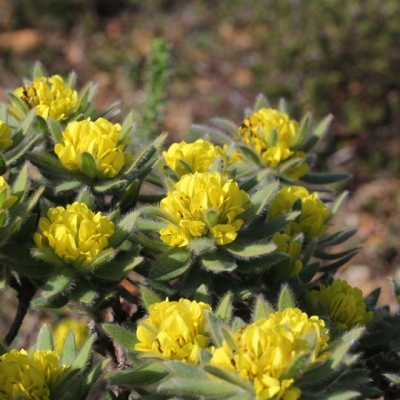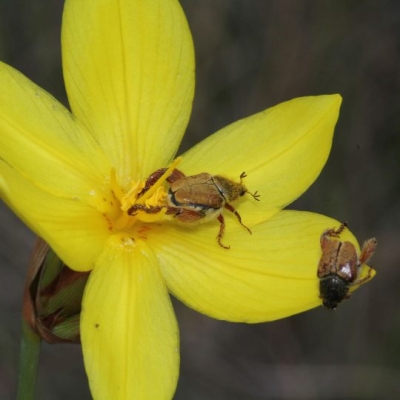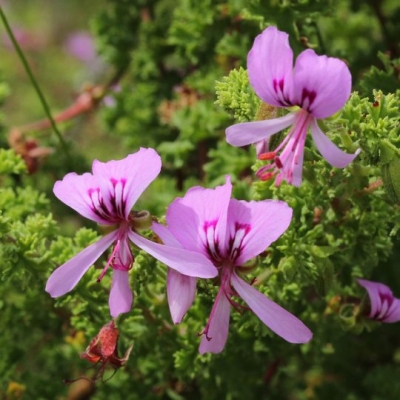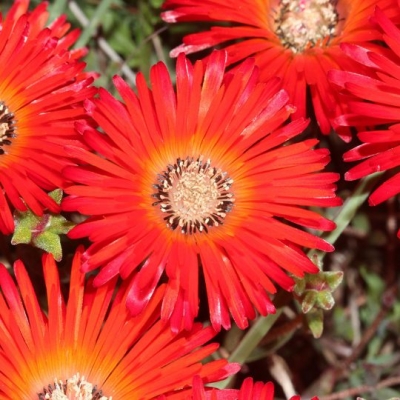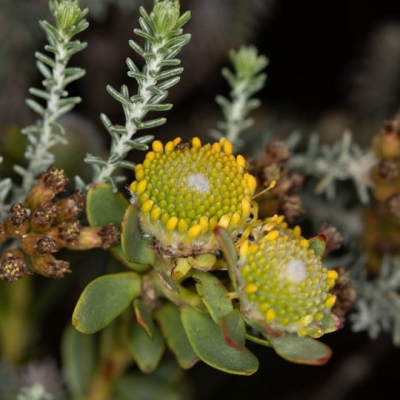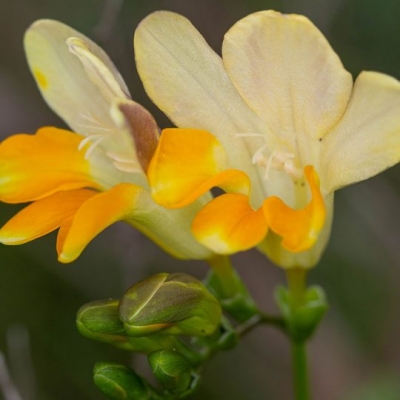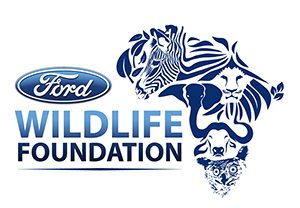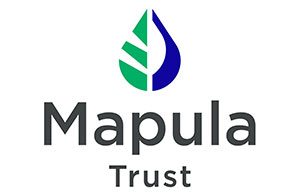With three more conservation easements just signed, severely threatened Renosterveld corridors between Swellendam and Heidelberg are now connected in conservation forever.
These three easements, signed with the Overberg Renosterveld Conservation Trust (ORCT), conserves 427 hectares of Endangered Eastern Rûens Shale Renosterveld and 32 hectares of Critically Endangered Rûens Silcrete Renosterveld.
More importantly, these three easement sites not only adjoin each other, but also connect up to three previously signed easement sites. As a result, it connects corridors together over the breadth of more than 10km and also links to the Contract Nature Reserve belonging to our Chairperson, Dirk van Papendorp (Voorstekop, signed up with CapeNature over 10 years ago). This forms part of the Trust’s vision to preserve and enhance ecosystem functioning and natural processes across farms.
According to ORCT Director, Odette Curtis-Scott, “We can now protect the immense biodiversity here across farms to allow for viable functioning ecosystems. These landowners are successful farmers in the Swellendam district, who see the value in protecting their Renosterveld habitat forever.”
The three farms that have been signed into what is known as the Hartebeesterivier Cluster are Kinko, belonging to Johan and Dirkie van As, Hartebeesterivier, owned by Adriaan Steyn, and a second Hartebeesterivier, owned by Nelis Swart. This cluster forms part of the ORCT’s Lower Breede River Cluster and is also recognised as an important Climate Corridor by the Table Mountain Fund.
Protecting Renosterveld “for our children”
Johan van As says he chose to sign the easement so that his children can experience Renosterveld the way he has experienced it. Watch his video here:
According to Adriaan Steyn, “The Renosterveld is important to me, because it’s one of the Critically Endangered systems that have survived, and it’s unique to our area. I would like to leave it to my children. To conserve it is better than converting it to production land, because it gives you a unique value that simply cannot be replicated.”
He chose to sign with the ORCT because together both have stronger clout with stakeholders such as government entities. Watch Adriaan’s video here:
For Nelis Swart, signing an easement is a “no-brainer”, because Renosterveld must be protected, in particular the smaller plants and animals that are often ignored.
The signed easements now protect this Renosterveld in perpetuity, with easements binding on all future owners too. In exchange for signing the easements, farmers receive support from the ORCT to remove invasive alien vegetation, manage wildlife and controlled burns and support with fencing for livestock.
With these new easement sites included, the ORCT’s easement programme has grown to 6500 hectares of natural habitat, including 4050 hectares of Critically Endangered Renosterveld.

